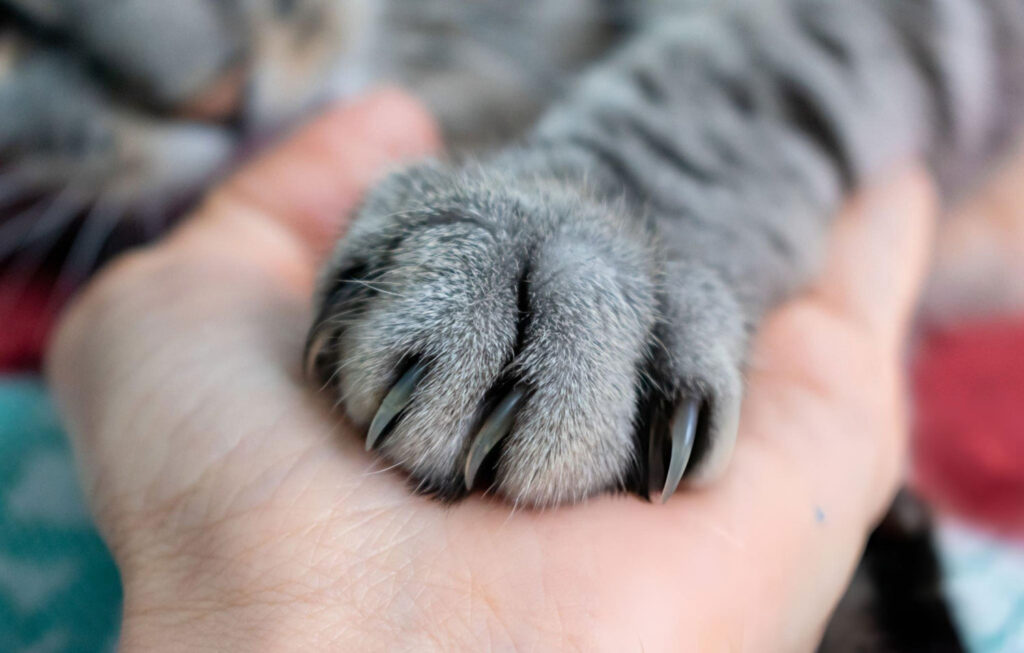As of February 2024, declawing for non-medical reasons is prohibited in Quebec. Unlike our fingernails, claws are an integral part of the third phalanx (bone) in the fingers and toes of animals. Removing them essentially meant amputating a bone at the tip of each digit. We now know that this procedure was not without consequences for the animal, and some cats still experience lasting effects from it. Fortunately, there are many ways to manage the claws of our feline friends!
Alternatives
Trim the claws more frequently to make them less sharp.
Try claw caps if your cat tolerates them: these allow the cat to continue scratching without damage. They are usually easy to apply, last a few weeks, and come in various sizes and colours. Your veterinary clinic can also apply them for you.
Provide a scratching post or cat tree for your cat to use for scratching.
Use pheromones to help your cat identify where it should scratch.
Discourage scratching on furniture by using strategies like double-sided tape, aluminum foil, or other materials to make the surface unappealing.
The Perfect Cat Tree
Tall enough for your cat to stretch out fully.
Varied orientations: Test vertical and horizontal scratching surfaces to see which your cat prefers.
Placement matters: Put it in the middle of a room, near a window, or in a spot where your cat spends most of its time.
Redirect behaviour: Position it near the sofa or other furniture your cat scratches to encourage the switch.


